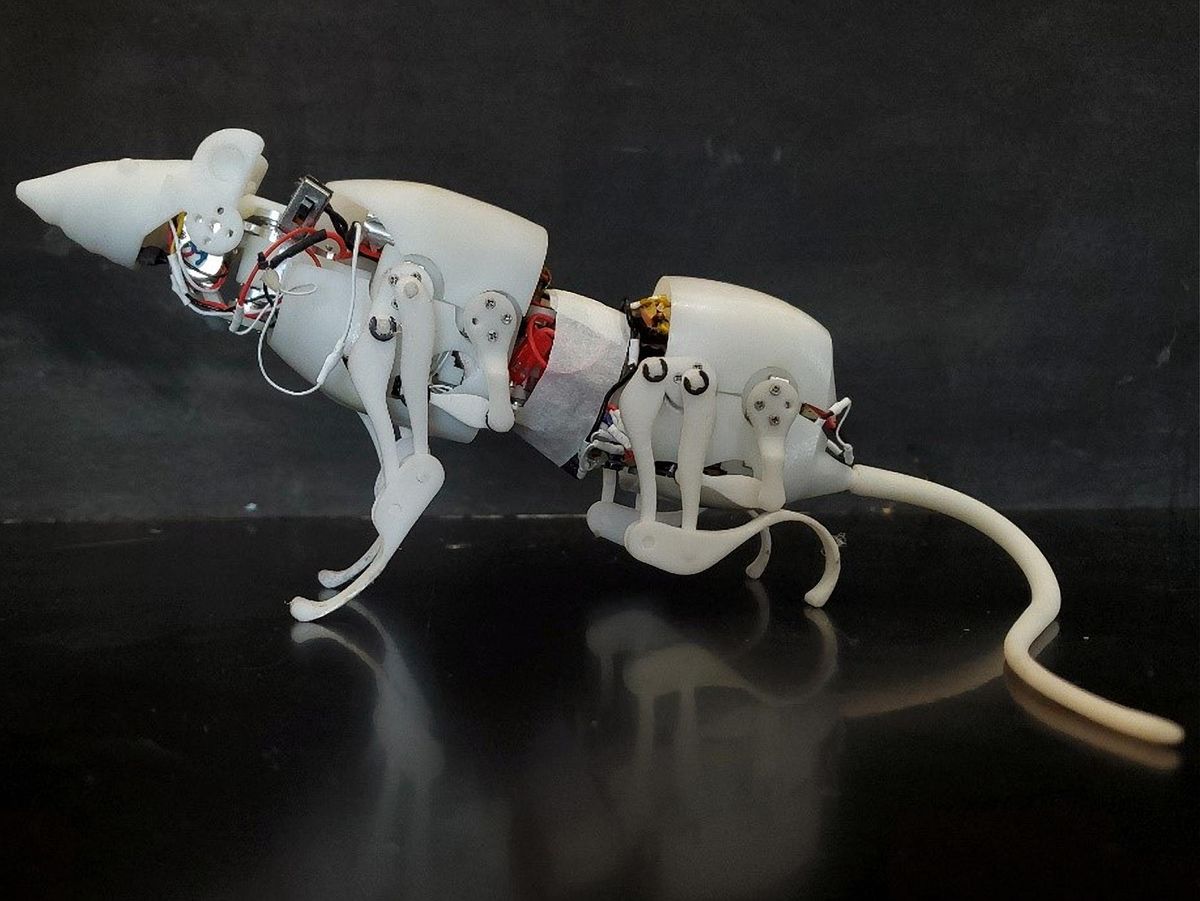There has been much interest in designing robots that are agile enough to navigate through tight spaces. This ability could be useful in assessing disaster zones or pipelines, for example.
But, choosing the right design is crucial to success in such applications.
“Though legged robots are very promising for use in real-world applications, it is still challenging for them to operate in narrow spaces,” explains Qing Shi, a Professor at the Beijing Institute of Technology. “Large quadruped robots cannot enter narrow spaces, while micro quadruped robots can enter the narrow spaces but face difficulty in performing tasks owing to their limited ability to carry heavy loads.”
Instead of designing a large four-legged robot or microrobots, Shi and his colleagues decided to create a robot inspired by an animal highly adept at squeezing through tight spaces and turning on a dime: the rat.
In a study published on 7 April inIEEE Transactions on Robotics, they demonstrate how their new rat-inspired robot, SQuRo (small-sized Quadruped Robotic Rat), can walk, crawl, and climb over objects, and turn sharply with unprecedented agility. What’s more, SQuRo can recover from falls, like its organic inspiration.
Shi and his colleagues first used X-Rays of real rats to better understand the animal’s anatomy—especially its joints. They then designed SQuRO to have a similar structure, movement patterns, and degrees of freedom (DOF) as the rodents they studied. This includes two DOFs in each limb, the waist, and the head; the setup allows the robot to replicate a real rat's flexible spine movement.
SQuRo was then put to the test through a series of experiments, first exploring its ability to perform four key motions: crouching-to-standing, walking, turning, and crawling. The turning results were especially impressive, with SQuRo demonstrating it can turn on a very tight radius of less than half its own body length. “Notably, the turning radius is much smaller than other robots, which guarantees the agile movement in narrow space,” says Shi.
Next, the researchers tested SQuRo in more challenging scenarios. In one situation they devised, the robotic rodent had to make its way through a narrow, irregular passage that mimicked a cave environment. SQuRo successfully navigated the passageway. In another scenario, SQuRo successfully toted a 200-gram weight (representing 91 percent of its own weight) across a field that included inclines of up to 20 degrees.
A Robotic Rat that Does It Allwww.youtube.com
Importantly, any robot that is navigating disaster zones, pipelines, or other challenging environments will need to be able to climb over any obstacles it encounters. With that in mind, the researchers also designed SQuRo so that it can lean back on its haunches and put its forelimbs in position to climb over an object, similar to what real rats do. In an experiment, they show that SQuRo can overcome obstacles 30 millimeters high (which is 33 percent of its own height height) with a success rate of 70 percent. In a final experiment, SQuRo was able to right itself after falling on its side.
“To the best of our knowledge, SQuRo is the first small-sized quadruped robot of this scale that is capable of performing five motion modes, which includes crouching-to-standing, walking, crawling, turning, and fall recovery,” says Shi.
He says the team is interested in commercializing the robot and plans to improve its agility via closed-loop control and in-depth dynamic analysis. “Moreover, we will install more sensors on the robot to conduct field tests in narrow unstructured pipelines,” says Shi. “We are confident that SQuRo has the potential to be used in pipeline [fault] detection after being equipped with cameras and other detection sensors.”
- AI-Powered Rat Could Be a Valuable New Tool for Neuroscience ... ›
- Watch This Robot Navigate Like a Rat - IEEE Spectrum ›
Michelle Hampson is a freelance writer based in Halifax. She frequently contributes to Spectrum's Journal Watch coverage, which highlights newsworthy studies published in IEEE journals.



